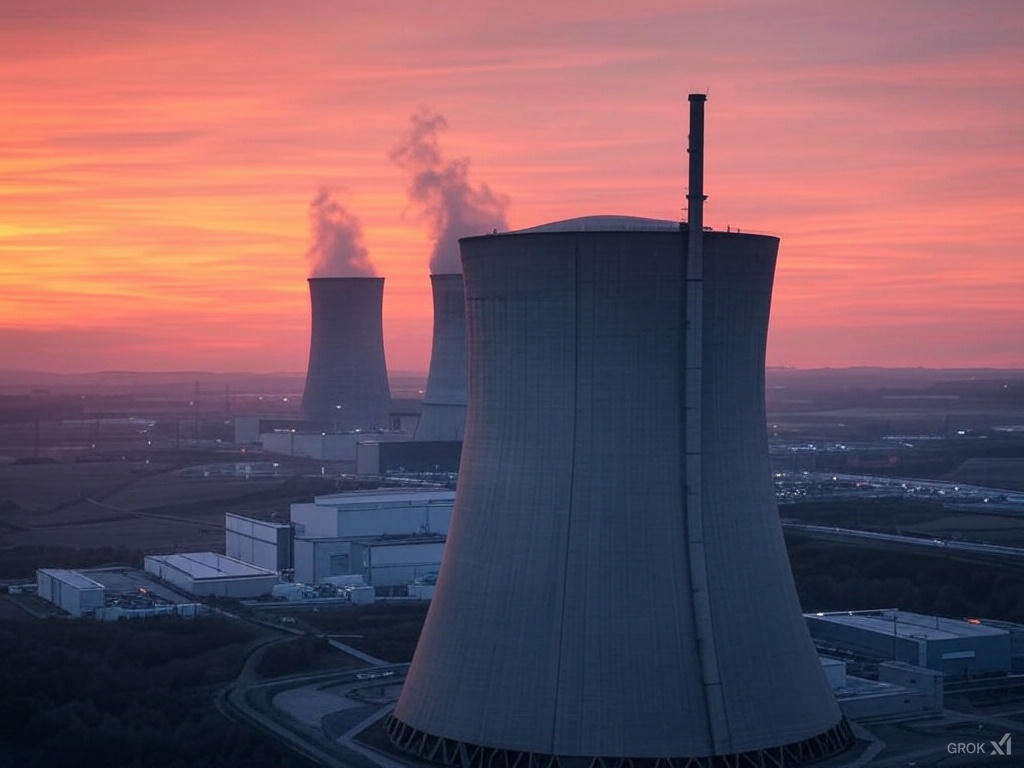Nuclear Energy
Nuclear Energy Formula |
||
|
\( E_n \;=\; \Delta m \cdot c^2 \) (Nuclear Energy) \( \Delta m \;=\; \dfrac{ E_n }{ c^2 } \) \( c \;=\; \sqrt{ \dfrac{ E_n }{ \Delta m } } \) |
||
| Symbol | English | Metric |
| \( E_n \) = Nuclear Energy Released | \( lbf-ft \) | \( J \) |
| \( \Delta m \) = Change in Mass | \(lbm\) | \(kg\) |
| \( c \) = Speed of Light | \(ft \;/\; sec\) | \(m \;/\; s\) |
 Nuclear energy, abbreviated as \(E_n\), is the energy released from the nucleus of an atom during a nuclear reaction. The energy released during a nuclear reaction is equal to the change in mass multiplied by the speed of light squared. The change in mass represents the difference between the mass of the reactants and the mass of the products. Nuclear reactions can release enormous amounts of energy, which makes nuclear energy a very powerful source of energy. However, nuclear reactions also have significant environmental and safety risks associated with them, which must be carefully managed. Nuclear energy is used in a variety of applications, including electricity generation, medical treatments, and research.
Nuclear energy, abbreviated as \(E_n\), is the energy released from the nucleus of an atom during a nuclear reaction. The energy released during a nuclear reaction is equal to the change in mass multiplied by the speed of light squared. The change in mass represents the difference between the mass of the reactants and the mass of the products. Nuclear reactions can release enormous amounts of energy, which makes nuclear energy a very powerful source of energy. However, nuclear reactions also have significant environmental and safety risks associated with them, which must be carefully managed. Nuclear energy is used in a variety of applications, including electricity generation, medical treatments, and research.
Nuclear Energy Advantages and Disadvantages | |
|---|---|
| Advantages | Disadvantages |
|
|
Key Concepts about Nuclear Energy
Nuclear Fission - In fission, the nucleus of a heavy atom, typically uranium-235 or plutonium-239, is split into two smaller nuclei along with the release of energy, neutrons, and gamma radiation. This process is used in nuclear reactors and atomic bombs. In reactors, the released neutrons can initiate a chain reaction, where more fission events occur, producing a large amount of energy that is typically used to generate electricity.
Nuclear Fusion - Fusion is the process where two light atomic nuclei combine to form a heavier nucleus, releasing energy in the process. This is the process that powers the sun and other stars. Fusion has the potential to provide a nearly limitless source of energy, but controlling the reaction for practical energy generation has proven to be extremely challenging.
Nuclear Reactor - A nuclear reactor is a system used to initiate and control a sustained nuclear chain reaction. Nuclear reactors are used in power plants to generate electricity and in submarines and ships for propulsion.
Radioactive Waste - The byproducts of nuclear reactions include radioactive materials that remain hazardous for thousands of years. The safe disposal and management of this waste is one of the major challenges associated with nuclear energy.
Applications
- Power Generation - Nuclear power plants provide about 10% of the world's electricity, using the heat produced by nuclear fission to generate steam, which drives turbines connected to electricity generators.
- Medical Applications - Nuclear technology is also used in medicine, particularly in diagnostic imaging and radiation therapy for cancer treatment.

